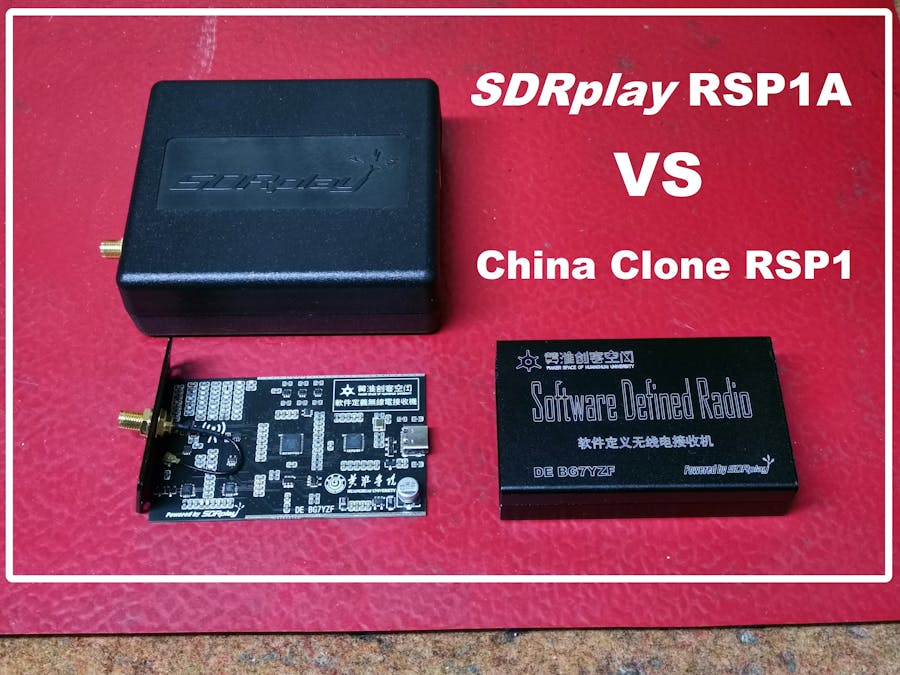Today I received from Aliexpress a small Software defined radio based on the MSI 001 and MSI 2500 chips. The radio arrived from China to Europe in 20 days and costs just under 50 US $ total with shipping. PCB is housed in a small compact Aluminum housing with laser engraved logo that is solidly made and gives a professional look. On one side there is an SMA antenna connector, and on the other side there is a USB - type C connector that serves to power the device, as well as to communicate with the PC.
Inside is a PCB with SMD elements. Both MSI chips as well as the input filters are clearly visible. The same chips are used as a basis by the well-known SDRPlay software-defined radio, which otherwise costs several times more. Therefore, this time I will compare the features of these two Radios with a few initial short tests, especially at the reception of the Shortwave Broadcast Stations, which are my favorites as the Shortwave Listener. During the test I will use equal conditions (antenna) for both receivers, which in this case is a home-made MINIWIP antenna for Shortwave and Colinear antenna for ADSB and FM receiving.
If the SDRuno software is pre-installed, the drivers will be installed without any problems. The original is RSP1A, and the clone is installed as RSP1, which is one series older than RSP1A. When starting the software we can choose one of these two devices. So at the same time we start two instances of the software with identical settings, which are marked with 0 and 1. We will also mark the receivers. Receiver 0 is Original RSP1A, and receiver 1 is RSP1 Clone. For testing the midwave and shortwave area I will use antenna splitter that I have made before, which is very simple to make and gives excellent results. In one of the following videos I will describe how to make it. I also created custom workspaces so that both instances can be run simultaneously on the same desktop.
After few tests, I can say that this Chinese clone version of RSP1 is surprisingly good in the range of 0.1 to 30 MHz and almost no difference can be noticed between the two tested devices, at least in terms of shortwave listening. I also have two more Chinese receiver clones with these chips, but their reception is significantly lower than the original RSP1A. In one of the following videos I will make a comparison between all three Chinese Clone versions of RSP1.
We will also make a brief comparison of 1.09 GHz, thanks to the excellent ADSB Plugin in the Sdruno software. With this plugin we monitor the signal emitted by aircraft flying nearby. n this case I use my homemade Coaxial Collinear Antenna.
As I expected from my experience with these clone receivers, the reception of high frequency signal over 500 MHz is significantly lower than the original RSP1A. However, this clone receiver is very good in this range as well, because the previous two clones had no, or very poor reception of these frequencies.
Also as expected, no difference can be noticed on the FM band, having in mind that these are local radio stations that broadcast a very strong signal.
And finally a general conclusion. This small SDR receiver will meet the needs of every radio listener, especially considering that its price is lower than 50 dollars and has almost identical features as the original RSP1. Another advantage is that it arrives from China as a package worth about ten dollars, so it is not subject to customs clearance.







Comments
Please log in or sign up to comment.